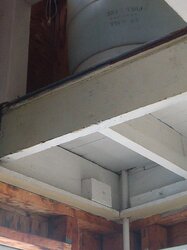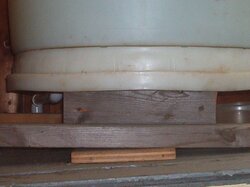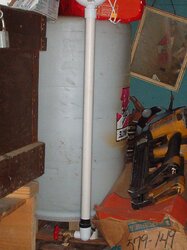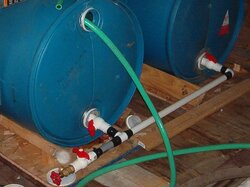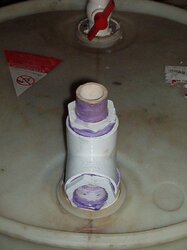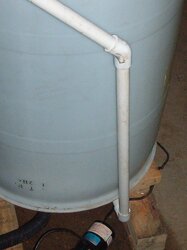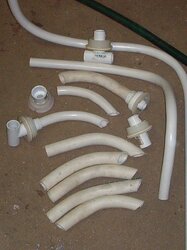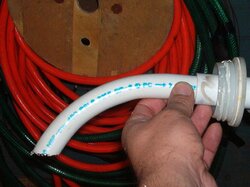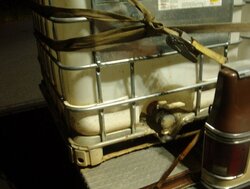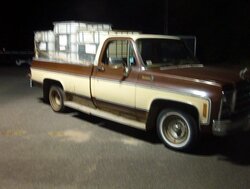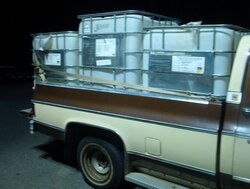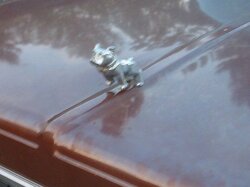northwinds said:
At the risk of asking stupid questions, I'm going to ask some.
1) Is all of the water coming from your roof?
2) What are you using for your storage tank? How much did it cost?
3) More pics?

We're going to be breaking ground on a new house either this fall or next spring. This is interesting stuff to me.
Northwinds,
...First off let me reply with my favorite saying of all time "The only stupid question...is the one you don't ask".
I don't find your questions "stupid" at all.
The water you see entering the storage tank...comes from...get this...my neighbors' roof! (long story). The surface area of the roof is aproximately 1000 sq/ft. (flat roof, one drain) a "three decker". The drain exits the SIDE of his building. Previously, (in the 'old' days this drain, was tied into the city sanitary sewer). It was "punched" through the foundation to exit and dump on the ground. And over the years, it worked it's way through the foundation...and would flood his basement...as well as mine. Being a good neighbor...I installed a 4" HDPE drain line from his drain...to my dry well. I had enough sense when installing it to "put in a loop". The drywell is 11 feet deep, "cone shaped" to a point at the bottom and roughly has a ten foot radius, two feet below grade. It is filled with various stone material...including 9 tons of 3/4 stone. It can hold 300 gallons for seepage. It also has a "sump shaft" made from a piece of 12" diameter, SDR-17 (green plastic sewer pipe). When initially installed it could disperse the 300 gallons within 15 minutes...today, 10 years later, it retains this water for anywhere from 3-5 days. The water contained in the drywell is often used to water the lawn without filtering.
The tank you see being filled in the picture is a 275 gallon "tote" often used in industry. They can be found for "short money", anywhere from free to up-wards of $75.00, they have a 2" bottom discharge, as well as a 6" fill neck (seen in the picture).
The second picture is the HDPE "insert" of a tote...oddly cut (found in the neighborhood). I use this as a filter basin/backup storage vessel. Between these two totes...and various 55 gallon drums (from a local car wash) which I have installed in various locations around the home (in,under around the back porch...and a few in the attic)

I have roughly built my system up to almost 2000 gallons! Out of pocket $ wise...I probably have $200.00 invested (for pipe, fittings, valves etc) and numerous hours I won't even begin to try to tally. I started simple and worked my way up. It's a hobby...that saves me money, conserves energy...and natural resources. I look at it as "practice" for someday "when I move to the woods up north".
I'll try to gather some pictures...I'm working on so many different aspects of the system so it's hard to pick the best ones...lol

This is one of the barrels: "Pumped storage", elevated 12ft above discharge spigot, "semi-permanently installed, inverted,natural vent". This is an 'oversized' 55 gallon...for the 'Mrs.' to water hanging pots and the small flower garden. It is "hard piped" and is used for a wand type sprayer. There are no "modifications done to the barrel". Interesting to note...keep in mind 55+ gallons of water get's pumped into this barrel...through the bottom!




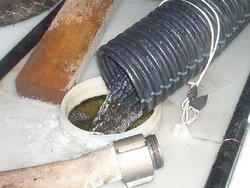
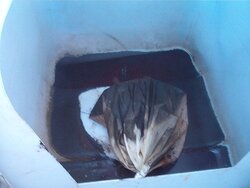
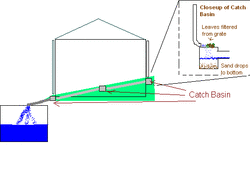
 I have roughly built my system up to almost 2000 gallons! Out of pocket $ wise...I probably have $200.00 invested (for pipe, fittings, valves etc) and numerous hours I won't even begin to try to tally. I started simple and worked my way up. It's a hobby...that saves me money, conserves energy...and natural resources. I look at it as "practice" for someday "when I move to the woods up north".
I have roughly built my system up to almost 2000 gallons! Out of pocket $ wise...I probably have $200.00 invested (for pipe, fittings, valves etc) and numerous hours I won't even begin to try to tally. I started simple and worked my way up. It's a hobby...that saves me money, conserves energy...and natural resources. I look at it as "practice" for someday "when I move to the woods up north". 